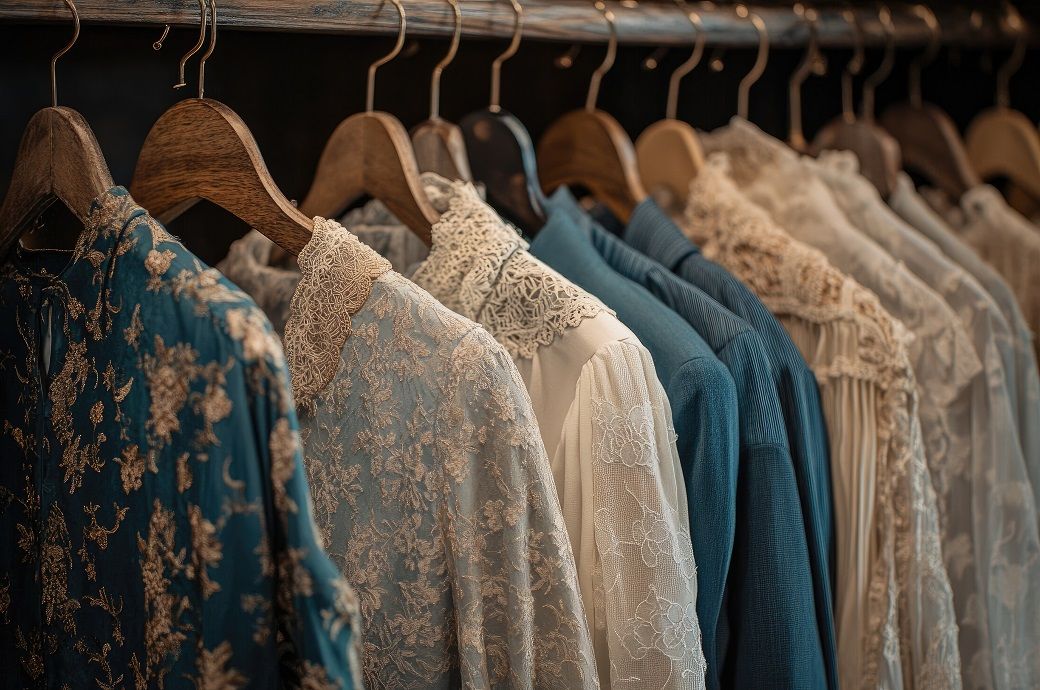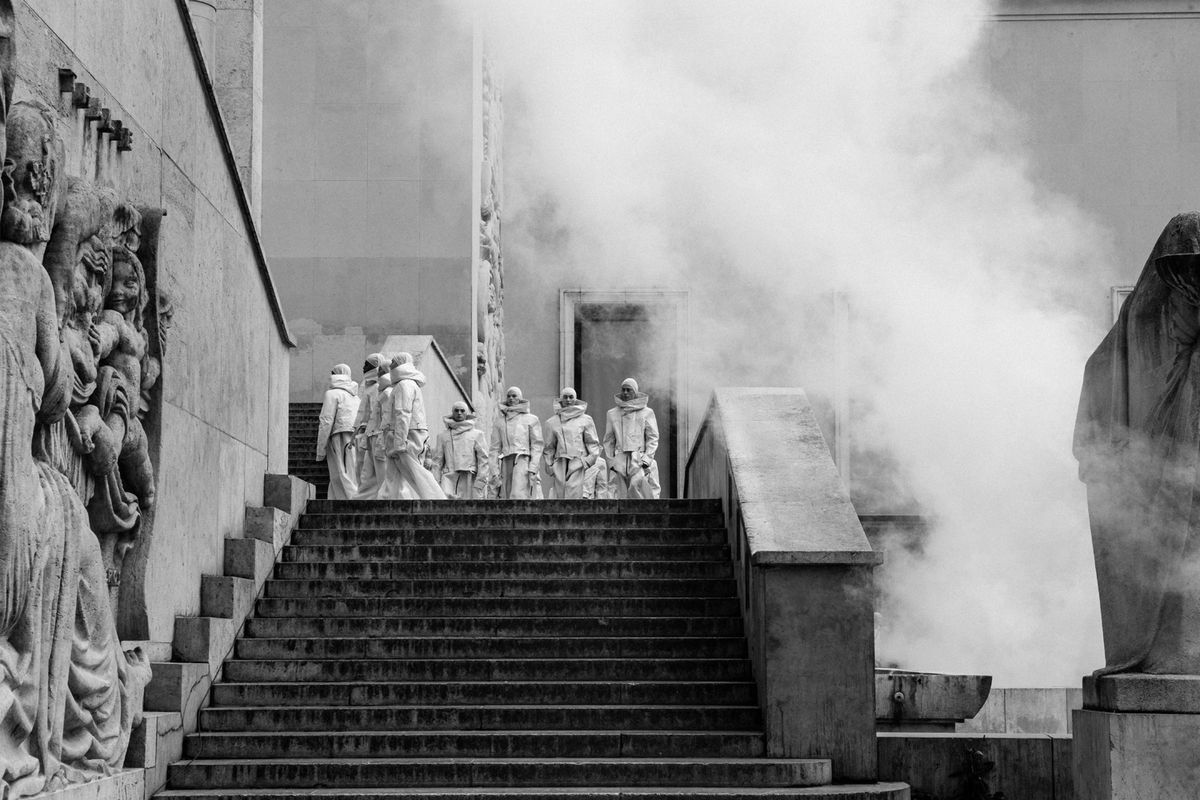Italy is a country that is steeped in tradition, and justly so. Yet in Milan, where the country’s centuries-old expertise in manufacturing culminates in a bustling fashion hub, some of the most esteemed houses have gained a decidedly modern energy. Names such as Gucci, Tod’s, Ferragamo, Etro, Missoni, Bally and Moschino – all of which have rich histories in the global fashion capital – are being reinvigorated by fresh design talent. And while each house has its unique codes – from Gucci’s horsey heritage to Missoni’s zig-zag knits – they have all settled on a new, yet classical, template for Milanese fashion.
Simone Bellotti
“I’m not afraid to say that these are classic pieces,” says Simone Bellotti, the new Italian creative director behind Swiss brand Bally, whose collection of tidy coats, sumptuous sweaters and covetable shoes at Milan Fashion Week in February brought a new excitement to the 173-year-old house. “I want to play with these ideas though, and for me, this means creating a very comfortable silhouette, softer shoulders on the jackets, or suits that aren’t stiff but that embrace you.” Bellotti, who grew up just north of Milan, has prestige in spades: in his early career, he worked under cerebral designer Carol Christian Poell and couturier Gianfranco Ferré, as well as for Bottega Veneta and Dolce & Gabbana. Before taking over from Rhuigi Villaseñor at Bally in May last year, Bellotti spent 16 years at Gucci, where he was shaped by creative directors Frida Giannini and Alessandro Michele. “More than my Italian heritage, I’m a product of all the experiences that I’ve had in my life, which have come from all different places,” he says.


For his AW24 collection, shown within the 17th-century Palazzo Serbelloni in the centre of Milan, Bellotti proposed a vision for Bally that linked his Italian flair with the house’s Swiss roots. “When you think about Switzerland, you immediately think about precision – the watches, the banks, the clean lines in design and art,” says Bellotti. “When you see ‘Swiss Made’ written on a product, you immediately know that it is the best quality. But I am very interested in talking about the emotions… and adding in the less tangible cultural layers.”

His Bally features perfectly tailored coats with firm yet sloping shoulders, flared out at the bottom to mimic mermaid tails that reference the folklore of the Engadine lakes; while Fair Isle patterns, adorning sweaters and knitted short-shorts touch on the culture of mountaineering and the outdoors. The shoes, in which Bally’s legacy lies, include a 100-year-old Mary-Jane style, which Bellotti found in the house archives, as well as a ballerina flat dating back to the ’40s.
“I like the Beckett line of bags, with the stripe motif, because sometimes simplicity is much stronger than trying to have too many elements. At the same time, we introduced these very funny bags, with little cow bells on them,” says Bellotti. “I am playing with the classic codes but trying to give them a modern attitude.”
Matteo Tamburini

Classicism is also on the mind of Italian-born Matteo Tamburini, who succeeded Walter Chiapponi as creative director of Tod’s last year. “I was inspired by the values and essence of the brand, such as the willingness to create something timeless, refined and desirable,” says Tamburini. “My idea was to strip down and reduce, using this as a foundation to set the tone for what will come next. It was a declaration of intent.” Tamburini has worked at Rochas, Schiaparelli and Emilio Pucci. Prior to Tod’s he was at Bottega Veneta designing the ready-to-wear. For his first AW24 collection, he was inspired by the Italian way of life: luxurious mélange sweater vests were paired with sharply tailored trousers; trench coats – in cream, navy and camel – were given oversized proportions; and double-layered striped shirts were tucked into belts with buckles inspired by vintage car grilles. “[It’s a] ‘soft approach’, which I believe is the ultimate value that makes Tod’s identifiable,” he says.



More obviously identifiable, though, are the brand’s highest-performing products – the iconic Gommino driving shoe, to which Tamburini added “flying fringes, to give it a lively attitude”, and the Di bag, to which he also lent a twist. “I swapped the handles to create the Di Swing, to be worn as you wish, and I [also] made a style that is flat in the construction, the bidimensional Di Folio bag, which is folded like a proper sheet.”
Adrian Appiolaza

The newest recruit to Milan, though, is Adrian Appiolaza, who joined Moschino in January and debuted his first collection the next month. Originally from Argentina, he moved to England in his early 20s, where he studied at Central Saint Martins, before working at Alexander McQueen and Miguel Adrover. He soon caught the attention of Phoebe Philo, who recruited him to Chloé, worked at Miu Miu from 2006, and then joined Marc Jacobs’ Louis Vuitton in 2010. Most recently, he designed ready-to-wear alongside Jonathan Anderson at Loewe, a position he held for a decade. Appiolaza’s direction for Moschino is perhaps the most drastic about-turn in Milan, given the pop-culture-fuelled confections that defined the brand under Jeremy Scott between 2013 and 2023. “I always admired Jeremy’s Moschino, and it was a really impactful and strong image for the brand,” says Appiolaza. “But for me, I have always worked for brands where reality and [commerciality] are really on the table. Selling and making real clothes is very important, if not the main thing.”


Appiolaza’s new reality is grounded in taking the signatures of Franco Moschino, who founded the company in Milan in 1983, while offering a more pared-back, everyday approach to design. “Franco always wanted to break the rules, and to have the freedom to express oneself through clothing,” says Appiolaza. “With my experience working in Parisian houses, I’m trying to put that ingredient into what I do at Moschino. It’s a little cocktail of the chicness of Paris with the warmth and fun of Italian culture.”

Appiolaza used the idea of the sciura, the older, wealthy and glamorous women who have historically lived in Milan’s city centre, as inspiration for his AW24 collection. “It’s the Italian lady with a trench coat and pumps, carrying a shopping bag with a baguette and a stick of celery,” he adds. He seasoned this with codes from the Moschino archive, including the ruffle skirt – which was inspired by flamenco dancers and Spanish culture – as well as the smiley-face motif, which he used to decorate bags, shirts and buttons. “The smiley is something that I always felt very attached to, even before coming to Moschino,” he says.
Like the other new talents, Appiolaza is working with the city’s heritage – the craft, the products and the people – while bringing new energy to its fashion. “Milan is something that I’m learning from and absorbing,” he says. “It will probably be a big part of the future of my Moschino.”









